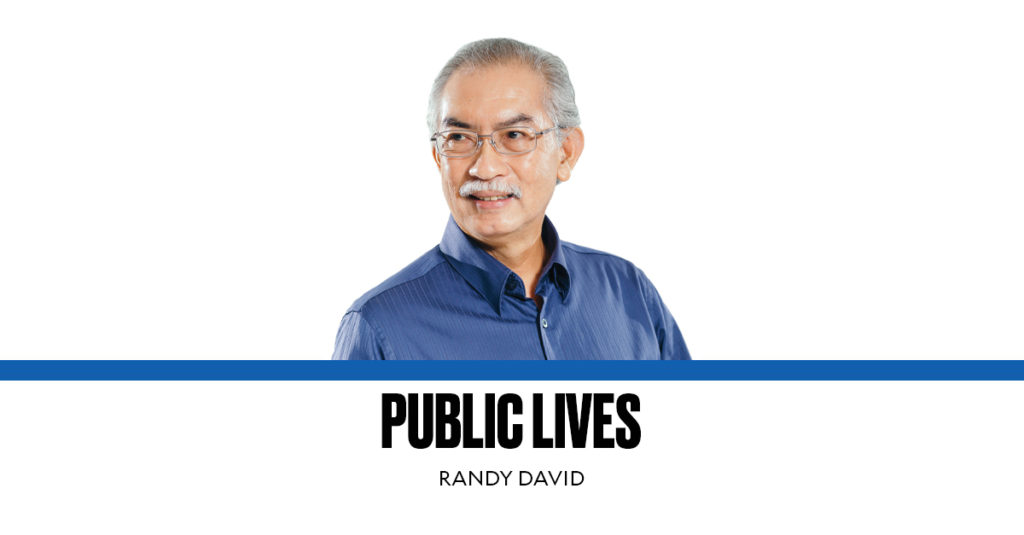I went to a public elementary school in Pampanga in the 1950s. As I recall, the language that all my early grade teachers used was Kapampangan. My classmates and I learned how to read and write in English and Pilipino, the term used for the national language in those years, from teachers who freely used the local language of our province as the medium of instruction. And this was way before Mother Tongue-Based Multilingual Education became policy.
Though my father was a lawyer, my family was never cash-rich. But I had a distinct advantage over most of my classmates. By the time I entered Grade 1, I knew my alphabet and could already read and write simple words. This was due largely to my mother, who took a keen interest in her children’s education. To her, a good solid education was all we needed to secure our future. Though she herself was not able to finish college because of the war, she seemed to know everything there was to know in school. Conversant in English, she preferred to use Kapampangan to explain the most difficult things to us.
In addition, we had books like Rizal’s novels and magazines like Reader’s Digest around the house. My father loved to recite poetry in English and Kapampangan, and I guess this instilled in us a deep interest in the wonder of words. But Kapampangan remained the language at home. I taught myself Tagalog by borrowing from a neighbor’s collection of Liwayway and Bulaklak magazines and Tagalog komiks. In high school, my reading fare was greatly enriched by the mostly unread US-donated books in the town library.
For as long as I can remember, the problems of education in our country have been mostly reduced to issues like the language used in teaching, the quality and availability of textbooks and other instructional resources, teacher competence, adequate classrooms, etc. As important as they are, these issues proceed from an internal view of the education system.
To my mind, the most important societal factor in the shaping of learning outcomes is the state of our families. I mean this in its sociological sense — that is, in the family’s capacity to provide the social, motivational, and material support for the child’s effective participation in the educational process. In this regard, perhaps nothing sums up the conditions and prospects for a society’s future development than the state of its families.
The conditional cash transfer program, or Pantawid Pamilyang Pilipino Program (4Ps), initiated by President Gloria Macapagal Arroyo and greatly expanded by President Benigno S. Aquino III, is a project that is expressly meant to provide financial assistance to families that have young children in school. The Philippine version of this program, which originated from Latin America, requires heads of families to attend the monthly “family development session” as one of the conditions for receiving the cash aid. I have personally witnessed how the seminar is conducted, and I have come to believe it is a valuable, if underestimated, feature of the program. I have written about the nature of this seminar in a previous column (“Educating the Filipino family,” 11/21/12).
The whole 4Ps program has been criticized as largely a waste of precious resources, an inducement to indolence, and a source of corruption. Its impact on educational outcomes has been dismissed as minimal at best. I hold a different view. Dropout rates have significantly gone down at all levels because of the program. The meaningful increase in the number of children finishing high school from families that previously had no high school graduates among their members is a reliable indicator of the program’s success. But I believe the implementation of the program can be further refined, starting with the proper identification of truly deserving families and of those that are ready to “graduate” from the program, though not necessarily from poverty.
A continuing assessment of the program, both of its intended and unintended consequences, is key to ensuring its success as a form of intervention that aims to be both redistributive and developmental. To achieve its aims, the government needs to consider substantially raising the cash grants to deserving families and getting the teachers and the local school boards to be more actively involved in the program. A quick look at the current economic situation of the country’s 25.5 million families would be enough to show how the sheer need to survive can take all the time of parents and make it hard for Filipino families to support the education of their children.
In his column of Aug. 13, my fellow Inquirer columnist Mahar Mangahas of the Social Weather Stations notes: “Nearly half of household heads in the nation rate their families as Mahirap (Poor), only one-fifth rate themselves as Hindi Mahirap (Not Poor), and nearly one-third feel on the border.” As of June 2022, he says, the nation’s Poor said they would need at least P15,000 per month “in order not to feel poor,” and that they would need an additional P6,000 “to reach their minimum.”
The amount of P15,000 covers only household expenses for one month and does not include other expenses like transportation and cell phone load. Compare the maximum amount of less than P2,000 per month, which a family with three qualified school-age children can get from the 4Ps program, with the P6,000 that poor families say they need as additional income.
The gap may as well be called a social responsibility deficit. We owe it to the children of the country’s poor to close that gap.
public.lives@gmail.com
MORE ‘PUBLIC LIVES’ COLUMNS
Covid burnout and the quest for normalcy
The phenomenon of ‘grade inflation’
